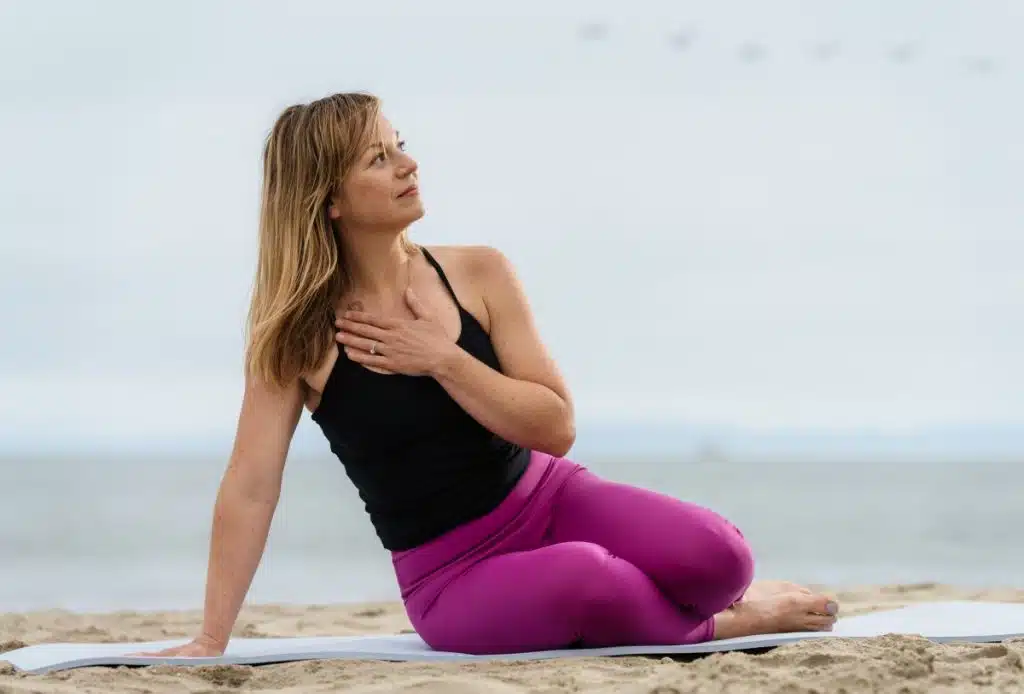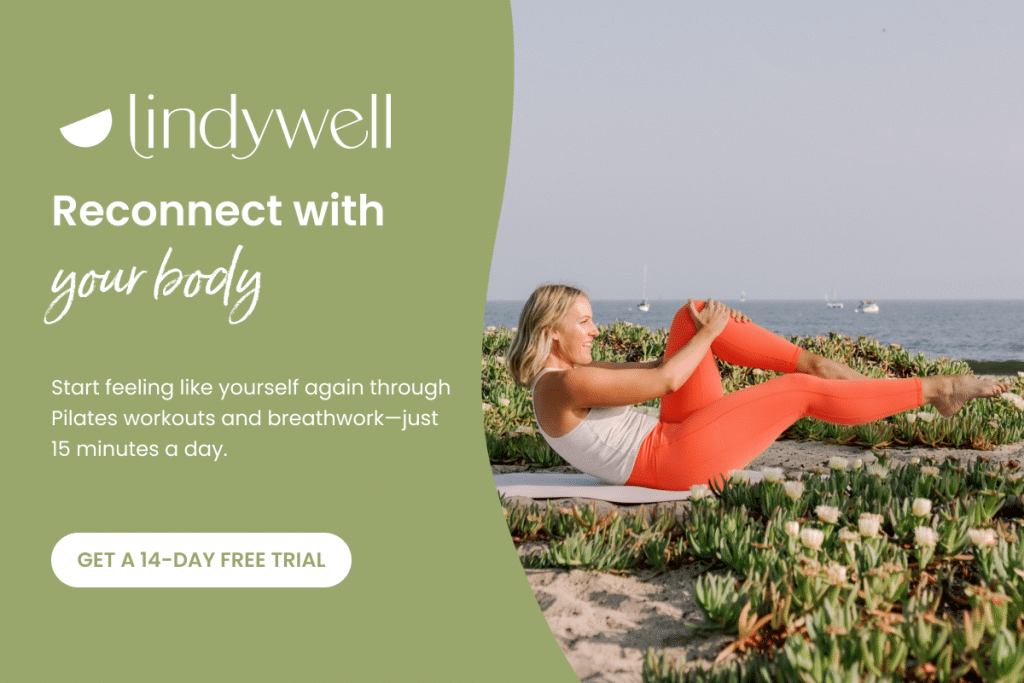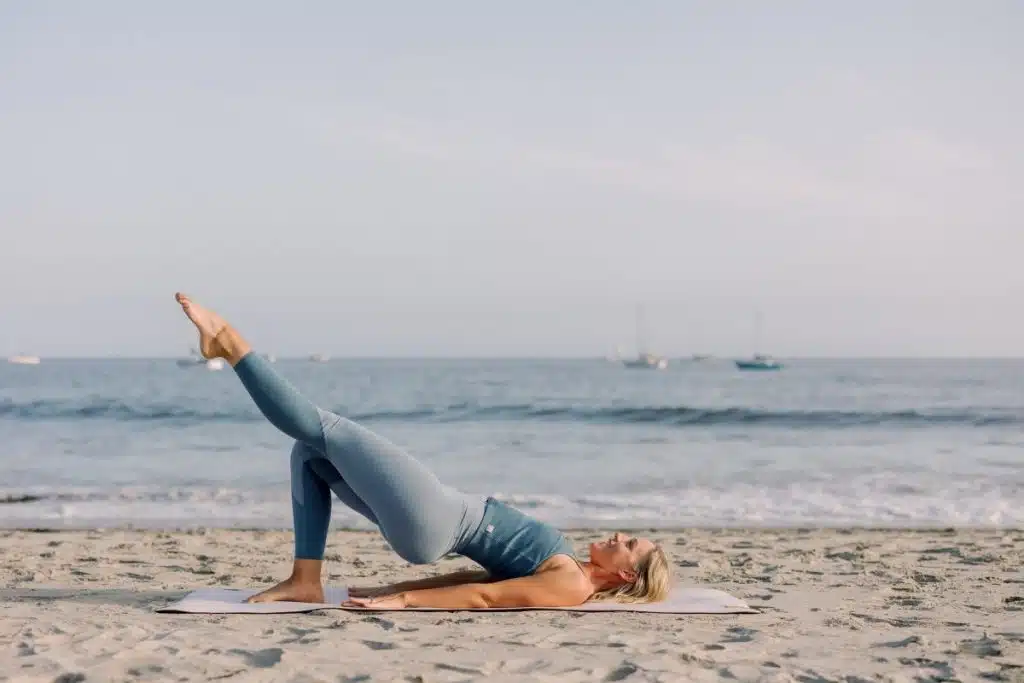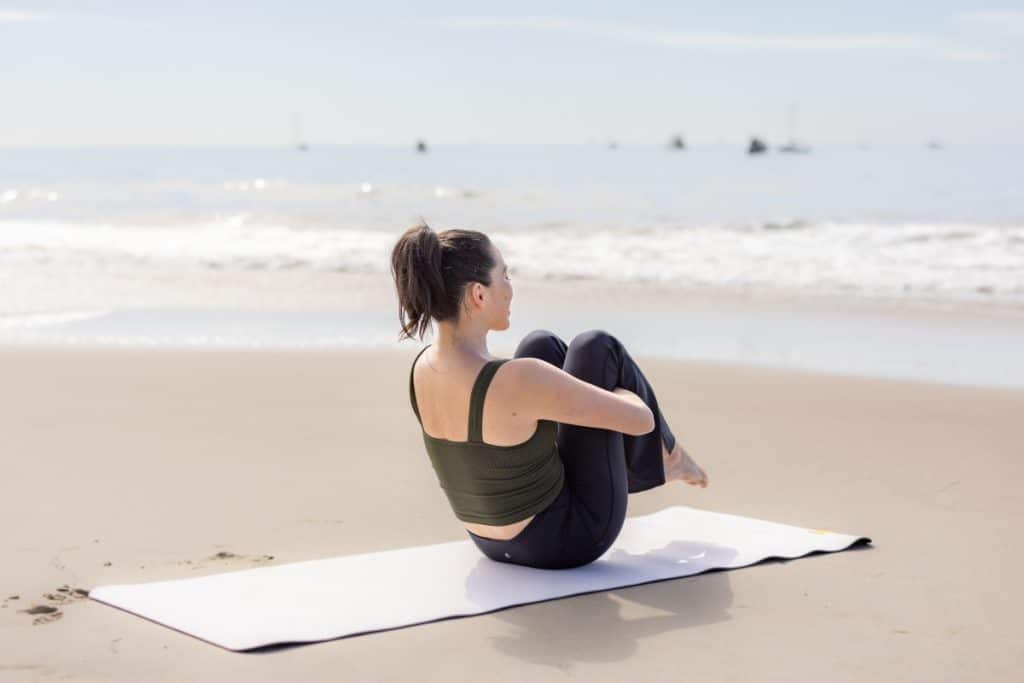
If you’re looking for activities for anxiety because you’re struggling more often than you’d like, you’re not alone. According to the World Health Organization, anxiety is more prevalent than any other mental illness. As women, we’re especially vulnerable to this condition—in 2023 alone, 32 percent of U.S. women reported feeling anxious versus 24 percent of men.
I’ve shared openly before about my struggles with paralyzing anxiety in the past (link to podcast episode on the topic). I’ve also shared how one of my kids has also experienced intense bouts of anxiety. This topic is near and dear to my heart and something that I am dedicated to speaking about and bringing more awareness to.
The rising rates of anxiety in kids, and especially girls, is very concerning to me. My hope is that by providing more support through Lindywell and pointing to other helpful resources, we can make an impact and fight against the rising statistics.
While seeking professional help is often the best and first step one should take, there are also tools you can use at home to feel better day-to-day and in the moment.

The Link Between Mindfulness and Anxiety Relief
Cultivating a mindfulness practice can teach you to reframe anxious thoughts to help restore a sense of calm. Research has shown that daily mindfulness training can decrease nervous system arousal and strengthen functional brain circuits to help relieve anxiety at a neurological level.
If you want to learn more about mindfulness and nervous system regulation, check out some of our recent blog posts:
- How to Cultivate an Attitude of Gratitude With Mindfulness
- How to Overcome Morning Anxiety for a Brighter Start
- 5 Ways to Create Inner Peace in Your Daily Life
- 5 Ways to Cultivate Mindful Living Through Daily Intentions
- Simple Somatic Practices for Healing the Nervous System
10 Mindful Activities for Anxiety Relief
At Lindywell, we’re firm believers that any wellness or self-care activity can be a mindfulness practice if you do it with intentional awareness. This means tuning into the mental, emotional, and physical sensations that arise as you do the activity. Staying fully present in that moment, even when that might be difficult to do.
But today I want to share 10 mindful activities that can be especially helpful for anxiety relief—that you can also easily do at home to restore balance, and ultimately, come back to a sense of true wellbeing.
Disclaimer: Based on how frequent and severe these anxious thoughts become, you could also benefit from working with a licensed therapist or seeking out other resources. Check out this free, confidential mental health hotline that’s available 24–7 or search for a therapist in your area on Psychology Today.
1. Pilates Workouts
Pilates is a restorative exercise that combines fluid, gentle motions with deep attentional focus. Ideally, Pilates should not be about pushing yourself to achieve a specific result, instead to notice how your body and muscles feel with each movement and let your body guide you.
While you can use Pilates to build strength (and our members love this aspect of the workouts!), Pilates also focuses the mind, while releasing endorphins in the body. This acts as a natural mood stabilizer and can help to alleviate symptoms of depression and anxiety.
Finally, Pilates is also easily adaptable for those with chronic pain or mobility restrictions, making it accessible to just about everyone who who is looking to move their body in a way the supports anxiety relief.
2. Gardening
There’s something innately therapeutic about a connection to nature—and cultivating your own garden can reinforce those healing benefits. That sensory experience of touching the earth and watching new life take root can nourish your mental health as well.
In fact, those who garden are more likely to report high emotional resilience and lower rates of depression, anxiety, and chronic stress. Even if you don’t have a large backyard or access to a communal garden, you can still grow plants on a balcony, patio, or window sill
3. Creative Projects
Whether you paint a sunset, crochet a scarf, write a poem, or draw in a coloring book, it’s so beneficial to free your creative juices. Research in the Cureus Journal shows a direct link between artistic expression and a boost in self-esteem, which could alleviate chronic mental health distress.
Creativity is not about perfection, so don’t worry about the final product—have fun with the process and let your imagination run wild. This is what will make any creative pursuit a great activity for anxiety relief!
4. Puzzles or Brain Games
Games that require deep concentration have been found to strengthen the brain’s prefrontal cortex, which improves decision-making, flexible thinking, and problem-solving. These mental skills can help you combat impulsive reactions or anxious ruminations before they become too overwhelming.
The key here is to choose a game that’s low-pressure (timed games can increase stress cortisol levels), such as a puzzle, sudoku, brain teaser, or word search. Making room for play has an incredible restorative effect on the nervous system.
5. Journaling
When an anxious thought, emotion, or belief threatens to immobilize you, grab a journal and translate it from an abstract feeling into concrete words. Even if all you can manage is a few sentences, this will make it easier to process what caused this bout of anxiety and whether the fear is based in reality.
A recent study shows that journaling each day for an entire month can help manage anxiety and post-traumatic stress symptoms on a day-to-day basis.
6. Gentle Stretches
As crucial as movement is for all facets of wellness, sometimes you just cannot summon the physical stamina or mental energy for an intensive workout. And that’s okay! I’ve been there many times, and I know I’ll continue to have those days—our bodies need different things on different days.
In moments like this, do some gentle full-body stretches to relieve tension and promote circulation. Performing stretches can increase relaxation, calmness, pleasure, stress management, and your overall mood state. Move with slow, mindful precision and focus on each sensation as the muscles contract and lengthen.
Start a Lindywell free trial to get instant access to 350+ Pilates workouts, which includes an entire section on restorative workouts and stretching that are perfect for days like this.
7. Body Scanning
Since physical, mental, and emotional health are connected, anxious feelings can manifest in the body as well. For instance, you could experience a headache, stomach nausea, tight shoulders, sweaty palms, or chest and throat constriction when you’re anxious.
Doing a body scan can teach you to notice where you’re holding tension, so you can direct compassion to that area and alleviate the discomfort. This process also helps reduce cortisol levels to regulate stressful or anxious emotions.
8. Conscious Breathwork
Breathwork can be a somatic practice that encourages you to tune into the natural, rhythmic cadence of breathing and your body. Plus, slow breaths from the diaphragm can lower blood pressure and heart rate to soothe autonomic nervous system arousal and return to a state of balance.
To make your deep breathing more somatic (to connect to calm within your body) try one of these simple exercises:
- As you inhale, notice how your stomach and lungs fill with air. As you exhale, notice how these areas of your body empty.
- When taking deep breaths, tune into all your senses. What do you hear? What do you smell? What do you feel?
- Before deep breathing, choose a point in your body to direct the breath. Focus on sending your breath to that area along with peace, compassion, or whatever you feel you need at that moment.
9. Music Appreciation
Whether it’s playing an instrument or listening to your favorite album, music can offer many profound healing benefits. There’s a reason your favorite song makes your whole body light up or that one slow song is just what you need to hear when you’re feeling low.
As a therapeutic intervention, music exposure has been found to boost self-esteem, resilience, emotional regulation, life satisfaction, and subjective well-being. So, turn on a song that makes you smile—and in the process, you’ll turn down the volume on those anxious thoughts. A favorite song that always gets me moving: September by Earth, Wind and Fire. It never fails!
10. Somatic Shaking
This is a somatic practice I LOVE to do—and you may feel silly at first, but trust me. Shaking is a technique in which you move from head to toe in primal, free-flowing motions to literally shake off chronic, built-up tension.
This practice can be used as a tool to process trauma and it can also lessen the impacts of anxiety, depression, or other mental health concerns. There’s no exact formula for how to do this, so don’t fixate on how you look or whether you’re doing it “right.”
The idea is to just relax your muscles, release your inhibitions, and just shake and move your body in any way that feels good.
Some of the Best Activities for Anxiety Relief Can Be Found Within Lindywell
If you or someone you know is experiencing anxiety, I want you to know you’re not alone. I know it can feel scary and isolating. I’ve been there. I also want you to know that you won’t feel this way forever. Continue to pursue tools that help you to manage your symptoms and keep taking slow deep breaths. You’re getting stronger by the day.
We’ve built Lindywell with a grace over guilt approach—each workout can help reduce anxiety as you tune into your breath and meet your body where it is that day. As a member, you can access more than 350 Pilates classes, along with guided breathwork sessions and nourishing (and easy!) recipes to feel good in your mind and body.
Sign up now for a 14-day free trial and unlock the anxiety-relieving benefits of Lindywell.







4 thoughts on “10 Mindful Activities for Anxiety that You Can Do at Home”
This was a very helpful and interesting article. Thank you Robin and team. I’m so glad to have you in my life❣️
We’re so thankful that you are a part of the Lindywell community, Robin, and glad that this blog resonated for you.
Thank for the tips! I have struggled with anxiety my entire life. Additional coping strategies always welcome.
We’re sorry that you’ve struggled with anxiety. We’re glad that this has been helpful and that you can add these tips to your self-care routine.